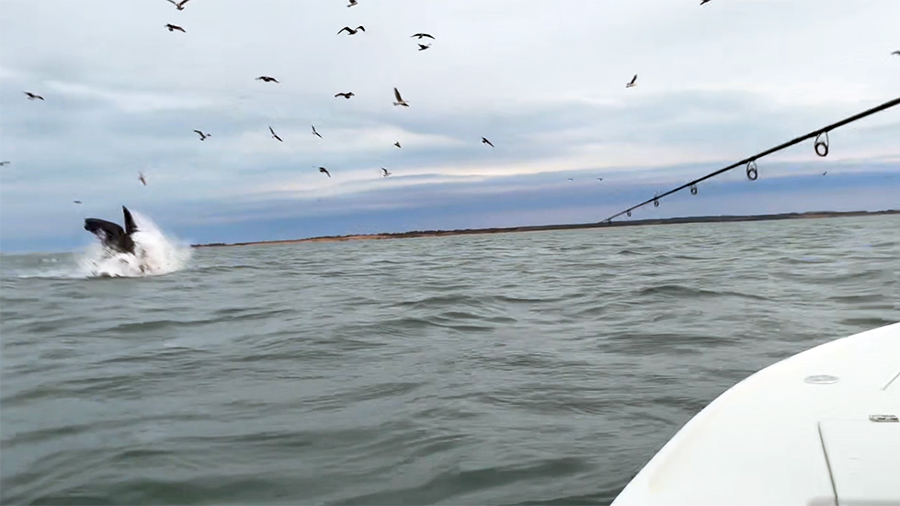2024 Saw Rise in Whale Sightings Off Montauk

Researchers have reported an increase in the whale population off Montauk in 2024 — and with it, a rise in whale strandings, prompting warnings for boaters to slow down and drive cautiously to prevent collisions.
Marianne McNamara, vice president and researcher with the Coastal Research and Education Society of Long Island (CRESLI), said in a recent Zoom forum that they observed a 36% rise in humpback whale sightings per hour in 2024 compared to 2023.
Researchers observed 122 whales in total, a stark rise from the 47 whales seen in 2023. But experts noted that this steep increase is also the result of the researchers having carried out more expeditions in 2024 than in 2023.
“More humpbacks occurred and remained off Montauk in 2024 than in any year since the identification efforts began in 2009,” said McNamara.
In addition to the population increase, researchers found that the whales are spending longer periods in the area. In 2023, the average stay for a whale was 17.8 days. Last year, that number rose to nearly 40 days.
“That’s very telling,” McNamara said during Wednesday’s online forum. “So the whales were here and they stayed. Why?” she asked. One reason, she explained, is a larger food supply of sand eels in the area due to, researchers suspect, an unexpected increase in cold, fresh water.
McNamara emphasized that these findings highlight the importance of New York Bight, the area of water along the Atlantic coast stretching between Cape May Inlet in New Jersey to Montauk Point, as a seasonal feeding habitat.
“Things are absolutely changing in our waters,” she said.
This increase has also led to more stranded whales being reported along Long Island’s shores.
Since 2017, the Atlantic Marine Conservation Society (AMSEAS) has responded to 114 large whale strandings in New York Bight. The organization performed a necropsy on 78 of these whales to examine their cause of death. Experts found 48 had evidence of human interaction and 32 were suspected of enduring collisions with vessels.
Rob DiGiovanni, the founder and chief scientist of AMSEAS who spoke at the online forum, said they need more data to determine if the rise in strandings is simply due to more whales in the area or if there are other factors at play. He stressed the importance of raising awareness among boaters so they know they need to drive cautiously in the area.
“Making people aware that the animals are here and going slower is better,” DiGiovanni said, adding that boaters should approach the waters as they would a school zone: slow down, stay alert, and keep your eyes open.
Boaters who see a whale, he recommended, should stop their boat and maintain a distance of at least 50 feet for the animal’s safety.



